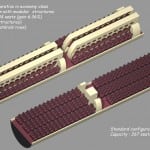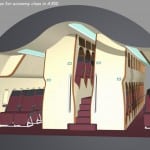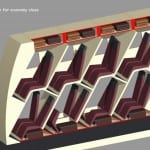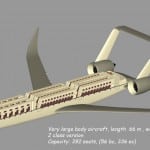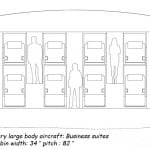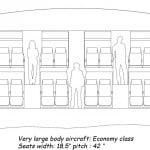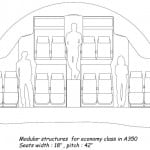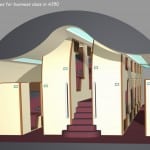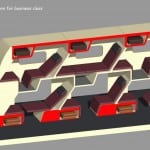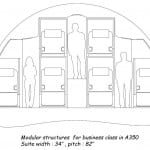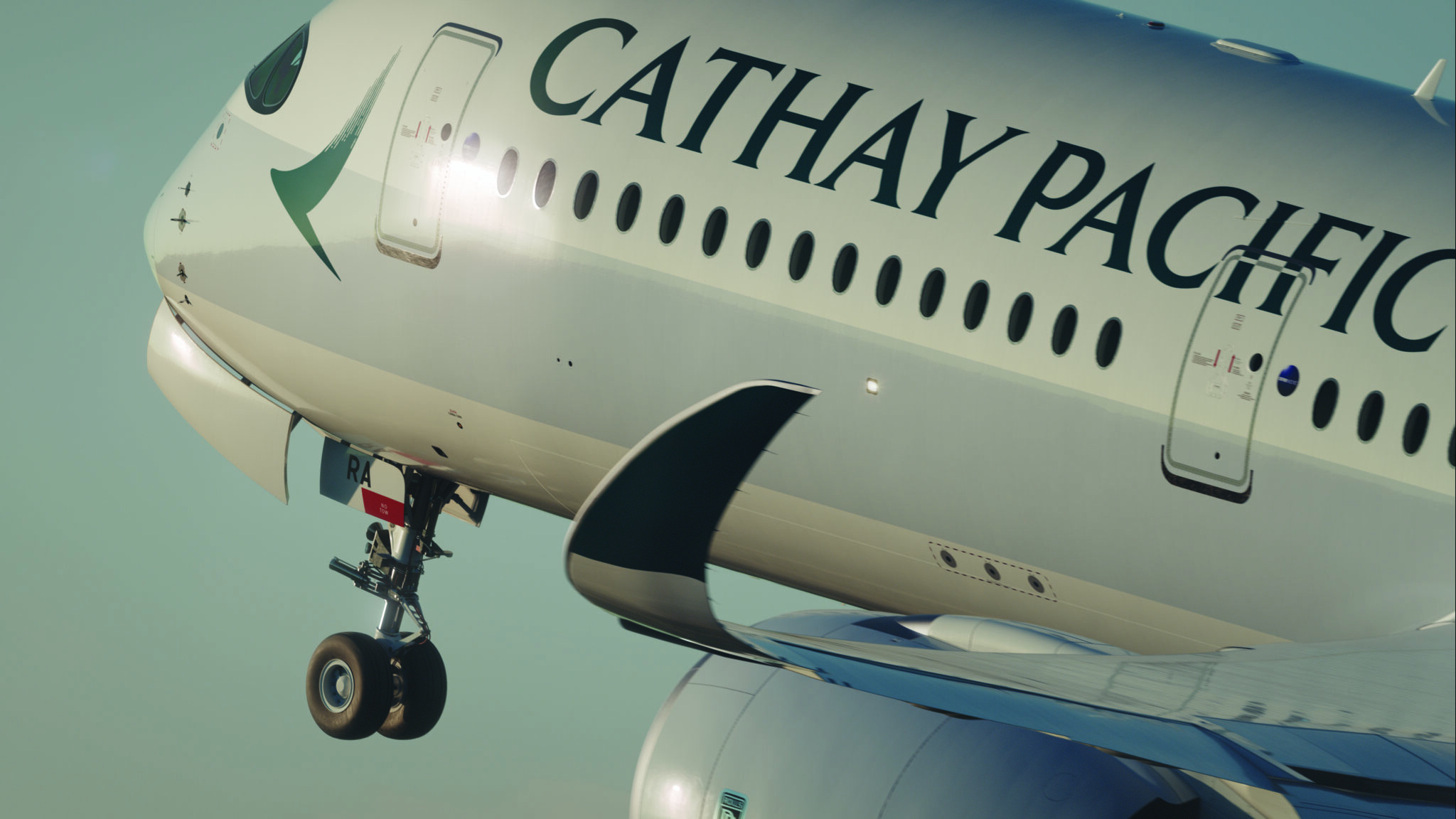New Vertical Cabin Design Stacks Passengers to Increase Room in Economy
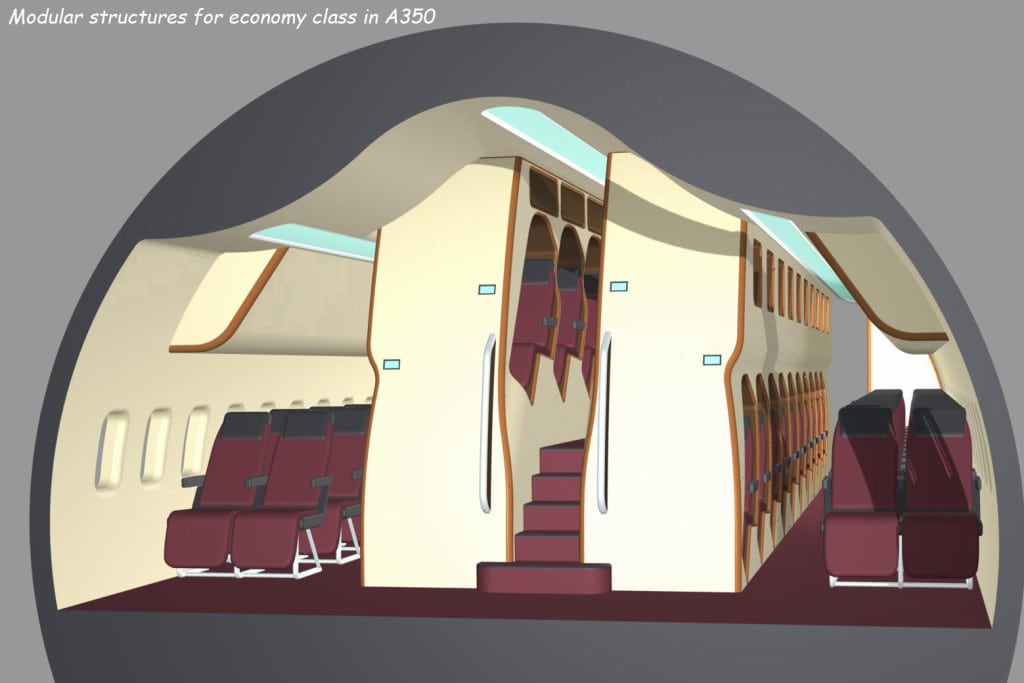
Skift Take
- Vertical seat lay-out proposal.
- Vertical seat lay-out proposal.
- Vertical seat lay-out proposal.
- Vertical seat lay-out proposal.
- Vertical seat lay-out proposal.
- Vertical seat lay-out proposal.
- Vertical seat lay-out proposal.
- Vertical seat lay-out proposal.
- Vertical seat lay-out proposal.
- Vertical seat lay-out proposal.
A patent filed by Airbus this year, which considered using vertical space in the cabin to make more room for passengers, was not universally well received. Despite this, independent inventor, Olivier Grégoire, stands by his own, somewhat similar, vertical seating proposal.
Grégoire’s points to some key advantages of his proposal which would benefit passengers.
- Increased pitch (to 42 inches)
- A better seat recline angle (35° instead of 15°).
- Ease of access and evacuation, resulting from three aisles.
- Improved relative privacy for passengers, with individual room for storage of carry-on items.
Though he is a designer, Grégoire is not an industry-insider. He works in the bedding industry and came up with this concept on his own, as a viable solution to today’s limited horizontal cabin space.
His argument, however, is similar to that of many industry designers proposing 3-D aircraft seating concepts today: that making the most of vertical space available in cabins will ultimately lessen the crunch on limited horizontal space.
Furthermore, Grégoire believes his stacked seating proposal addresses some of the weaknesses of related design concepts.
“The access and evacuation [of other proposals] seem to be very problematic, due to the individual vertical stairs. Also there is no privacy for the passengers and I think that will cause some major problems like "smelly feet" inconvenience, or in case of unacceptable behavior from certain passengers,” he tells us. “I think that the modular structures [of my design] avoid these inconveniences.”
More Room for More Passengers
Grégoire says that his design would also allow higher passenger numbers on existing aircraft, but did not design the cabin for this purpose. Rather, his focus was on better allocation of the room available to each passenger. The extra capacity was simply a result of the total area available.
“When I began working on this concept three years ago my main objective was to improve passenger comfort in economy class, without decreasing aircraft capacity,” he says. “I extrapolated it for business class [on the second round of design]. I really think that this objective was achieved by increasing the pitch to 42 inches and seat-back [recline] to 35 degrees without disturbing the passenger [seated] behind. Also the passenger enjoys relative privacy, [unlike] current economy class [seating]. After, I did a simulation in an A350 cabin, it seems that it is possible to increase the economy class capacity by about 6 percent, but this wasn't my [first priority].”
Not the Popular Approach
When asked whether he worries that passengers might see things differently, Grégoire tells Skift, “I hope that the potential users will see the comfort benefit of the concept and understand that the main intention isn't to put more and more passengers in the cabin. I might be wrong but I am confident that they will understand.”
That Grégoire came up with this concept independently, inspired he says by previous seating concepts like Factorydesign’s Air Lair, might be of some comfort to industry designers who share the opinion that the only way left to go in the cabin is up.
At a recent Seating Innovations meeting of industry engineers and designers in Hamburg, many expressed dismay over the strong negative public reaction to their rough-draft seating ideas. All agreed something must be done to ensure more individual space, while meeting increased demand for seats onboard.
Of course, some fliers might argue, there should perhaps be fewer passengers onboard aircraft. Instead, there should be fewer seats with more room for each individual passenger.
The Good Side of Crowded Skies
There is a romantic notion that this is a flying experience lost to the ‘Golden Age’ of aviation.
This concept is somewhat at odds with complaints that the best of today’s flying experience—which puts yesterday’s best to shame—is the exclusive privilege of the 1%.
These complaints ignore the fact that the ‘Golden Age’ of aviation was also the exclusive privilege of 1%; or, at best, the top 3%.
There is another, perhaps more serious, oversight in ignoring the need for increased aircraft density: more people want to fly.
The Bad Side of Decreased Density
IATA predicts that passenger numbers will double to 7 billion by 2034.
These increased passenger numbers are driven by the affordability of flight, the popularity of flight, and the essential role flight plays in our global economy.
Supporting growing passenger numbers, on aircraft which are less dense, would mean raising fares to the same high levels of the ‘Golden Age,’ thereby making flying affordable only to a very few, and/or putting many more aircraft in the skies than existing aviation infrastructure, or the environment, can support.
Looking Up for Answers
To resolve these conflicting agendas, industry insiders and outsiders, like Grégoire, are reaching the same conclusion: the future of the aircraft cabin is overhead.
The various concepts out from the industry there are no more than first sketches. Grégoire acknowledges there are still kinks to work out of his designs.
Some designers are considering possibilities to change the in-flight experience completely, while better distributing space.
Airlines can make immediate improvements for customers who want something better, and are willing to pay for it, by introducing more Premium Economy cabins.
But Economy passengers need better conditions too. Today’s horizontal lay-out, within the limited cabin real estate available on aircraft, can only take us so far.
Creative Use of Expensive Real Estate
Unless we’re willing to pay today’s business class fares for slightly improved Economy class tickets, and to limit today’s and tomorrow’s air travel, it’s time for aviation to get radically creative.
It’s also time we let all the engineers and designers get back to work, perhaps cut them a little slack. Initial sketches rarely represent the final product, and safety regulations exist to keep extremes in check.
As we head for the crowded skies of 2034, the last thing we want to do is stifle creativity. If anything, we’re going to need more innovation, from the industry and beyond.
For his part, Grégoire is willing to give thinking differently a shot. He's even designed an alternative aircraft design, though he acknowledges that he's not an aerospace engineer, and that this other baby might not fly any time soon. But, Grégoire hopes that his seat concept does.
